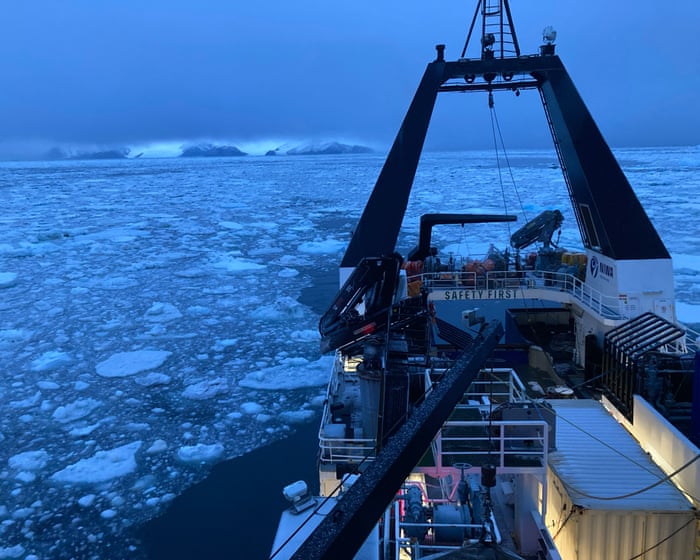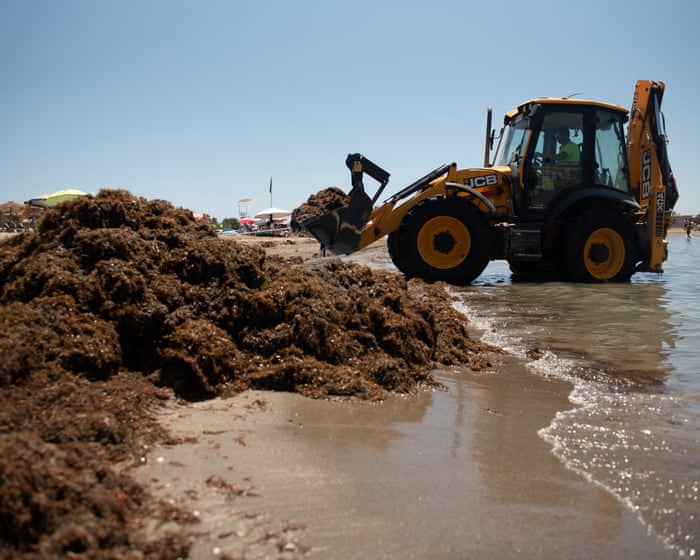Three glass jars filled with satsuma-sized sea urchins sit on Dr. Hugh Carter’s desk at the Natural History Museum. Collected from the Southern Ocean by polar expeditions led by Ernest Shackleton, Robert Falcon Scott, and Carsten Borchgrevink over a century ago, these specimens represent both heroic exploration and scientific discovery.
Now, Carter—the museum’s curator of marine invertebrates—hopes these 50 preserved Antarctic urchins will help reveal a more pressing modern story: how changes in the Southern Ocean are affecting marine life.
In January, Carter retraced the routes of those early expeditions during a six-week research trip. His journey, part of a larger scientific effort led by New Zealand’s National Institute of Water and Atmosphere (Niwa), revisited sites sampled by Borchgrevink’s Southern Cross, Shackleton’s Discovery, and Scott’s ill-fated Terra Nova between 1898 and 1913. Scott and four others, including chief scientist Edward Wilson, died in the ice just weeks after collecting some of the specimens now on Carter’s desk.
Antarctica is warming twice as fast as the global average, but a lack of historical data makes it hard to track long-term changes. Carter believes comparing the shells (or “tests”) of these century-old urchins with modern samples could shed light on ocean acidification—a major consequence of climate change. When carbon dioxide dissolves in seawater, it lowers the pH, making it harder for marine life to build calcium carbonate shells.
Early findings aboard Carter’s research vessel, the RV Tangaroa, seemed to confirm his concerns. “We know the ocean is becoming more acidic, but we often don’t understand the full impact,” he says. “We suspected that acidification would reduce calcium carbonate in the water, making it harder for organisms that rely on it to survive.”
Creatures like corals, sea snails, oysters, and tiny plankton called foraminifera all depend on calcium carbonate for their shells. But since it dissolves easily in acid, rising acidity threatens their survival. Recent research shows 60% of global waters have already passed safe acidification limits—a “ticking time bomb” for marine ecosystems.
While the century-old urchins on Carter’s desk have strong, healthy shells, the modern specimens collected in January were thinner and more fragile—so delicate that some crumbled under the water pressure used to clean them.
“All the new ones we collected were fragile, and some collapsed,” Carter says. “At first glance, the modern shells seem weaker than the historical ones, but we need further analysis to be sure.”We’re still trying to understand exactly how much and what specifically is causing this. “There are other factors involved, of course, but the fact that the new shells are thinner is worrying,” says Carter.
He adds that ocean acidification could have massive biological consequences: “It might make the oceans uninhabitable for creatures with calcium-based skeletons.”
During the expedition, the effects of the climate crisis were clear—some research sites were only reachable because of melting ice. The trip also coincided with alarming reports that global sea ice had hit a record low, another sign of our warming planet.
But there were bright spots too. Carter spotted up to 150 whales and what he called “unbelievable amounts” of wildlife near Coulman Island’s western edge, where 17 species of starfish were found in just 100 meters—the same number as in all of the UK’s shallow waters.
“It’s exciting to see that some parts of the world aren’t as damaged as they could be,” he says. “This is one of the few places left where you don’t see plastic pollution or signs of fishing.”
Professor Craig Stevens, an oceanographer with Niwa who co-led the expedition, described their findings as “bittersweet.”
“The loss of ice affects not just the local ocean but the entire planet. This work is both rewarding and sobering. While it’s incredible to push science forward, we’re also getting glimpses of a future we desperately need to avoid. It makes the urgency of cutting greenhouse gas emissions painfully clear.”




